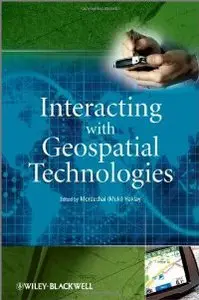The Use of Geospatial Technology in Real Estate Market Analysis
In recent years, the real estate industry has undergone significant transformation due to advances in technology. Among the most impactful innovations is the use of geospatial technology in real estate market analysis, which has revolutionized how market trends are assessed, properties are valued, and investment decisions are made. This article explores the key benefits and applications of geospatial technology in real estate market analysis and how it is reshaping the industry.
What is Geospatial Technology?
Geospatial technology refers to tools and techniques used to collect, analyze, and visualize data related to geographic locations on the Earth’s surface. This includes Geographic Information Systems (GIS), remote sensing, GPS, and spatial data analytics. When integrated with real estate data, geospatial technology enables a deeper understanding of spatial patterns and trends that influence property values and market dynamics.
Enhancing Market Insights with Geospatial Data
The use of geospatial technology in real estate market analysis allows investors, developers, and agents to visualize properties in relation to their surroundings. Factors such as proximity to schools, transportation hubs, commercial centers, and environmental risks can be mapped and analyzed efficiently. This spatial insight helps stakeholders make informed decisions based on comprehensive market intelligence rather than relying solely on traditional data sources.
Applications of Geospatial Technology in Real Estate
1. Site Selection and Suitability Analysis
Real estate developers use geospatial technology to identify optimal locations for new projects by evaluating land use patterns, zoning laws, and environmental conditions. By layering multiple data sets on a map, they can assess site suitability quickly and with greater accuracy.
2. Market Trend Analysis
Through geospatial analytics, analysts can monitor housing price fluctuations, rental rates, and demographic changes within specific neighborhoods. This helps predict emerging hotspots and guides investment strategies.
3. Risk Assessment and Management
Natural disaster risk zones, flood plains, and other hazards can be mapped using geospatial tools to assess property risk. This information is critical for insurers, buyers, and policymakers aiming to mitigate potential losses.
Benefits of Integrating Geospatial Technology
The adoption of geospatial technology in real estate market analysis provides several advantages:
- Improved Accuracy: Spatial data adds context to market trends, leading to more precise valuations.
- Enhanced Visualization: Interactive maps and models simplify complex data for better stakeholder communication.
- Faster Decision-Making: Automated geospatial analyses speed up the evaluation process.
- Competitive Advantage: Early identification of market trends and risks helps investors stay ahead.
Conclusion
The use of geospatial technology in real estate market analysis is transforming how industry professionals understand and navigate the market. By incorporating geographic data and spatial analytics, stakeholders gain richer insights, enabling smarter investments and development decisions. As technology continues to evolve, geospatial tools will become even more integral to the real estate sector’s future.


